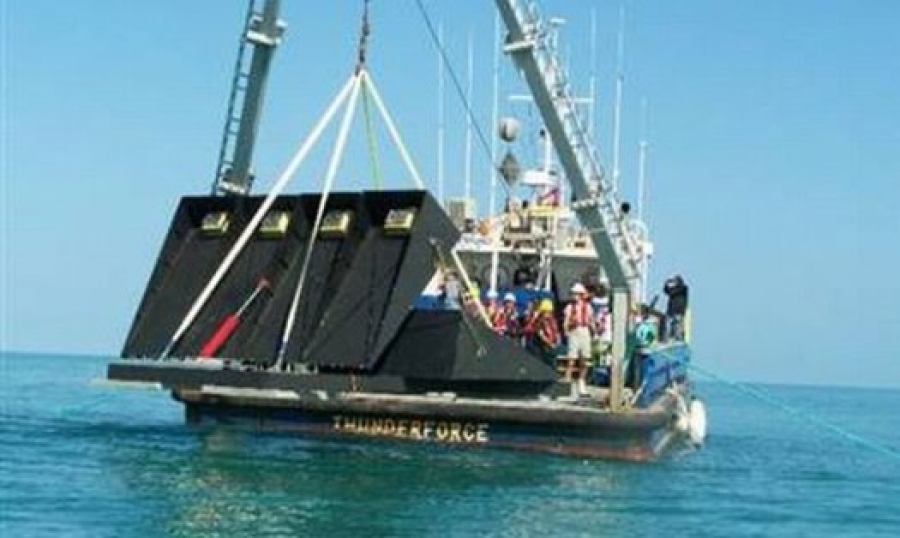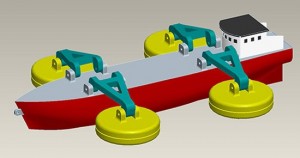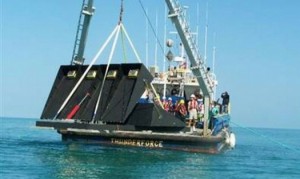Just like wind mills and wind turbines that generate power and electricity from the wind, scientists are now working to generate power from the sea. Stephen Wood, an assistant professor of marine and environmental systems at Florida Institute of Technology’s College of Engineering is working on this technology for its advance and proper use. This technology will use Wing waves in a very efficient way to generate electricity and power from the sea.
The wing waves technology to produce electricity and power from sea is a project initiated by a renewable energy firm from Tallahassee called the Clean and Green Enterprises. This firm has been working in this area since the past five years.

The use of Wing Waves to produce electricity from the sea. According Wood, about 200,000 houses can be lit with the help of one square miles of wings that produce around 1000 units of electric power. Power is generated by changing elliptical motion wave into mechanical energy after trapping it 30 feet to 60 feet below the sea.
The chief executive with Clean and Green Enterprises Inc., Terence Bolden says that the wings sway 30 degrees from side to side. They take 8 to 10 seconds to complete every arc. In this process, they produce electricity.
Basic requirements to use Wing Waves to produce electricity from the sea
To use Wing waves to produce electricity from the sea, there are two basic requirements: depth of 40 to 50 feet and a sandy bottom. Sea fans are placed on the sandy base. Though, bigger wings can be used to tap water to make electricity but for that the plant to make these wings has to be situated near the ocean. Till then, the fans having trapezoid-shaped wings that are 8 feet tall and 15 feet wide will continue to be used and they will be transported through road. The height and the width of the wings are carefully made so that they can be transported by the road and can be easily placed under the sea.
Advantages of using Wing Waves to produce electricity from the sea
An example of Wind Waves to produce electric power from the sea was showcased when two 8-foot-tall wing flaps moved up and down on the seabed, just a few miles away from the Fort Pierce Fla.
The advantages of Wing waves are:
• It is a clean and green way to generate electric power.
• It is an alternative way to provide power.
• It protects sea life. Wings waves are very environment friendly as they do not cause any danger to the turtles and attract fish.
• The power produced in the sea can be used on land by transferring the electricity from sea to land through cables.
• The wing waves are a treat for the eye to see.
• If these wings are properly maintained, they can be used up to 20 years.
• The wings will operate and generate power even when the sea is a bit calm. The wings will get locked automatically during hurricanes, when the sea is rough.
• Wing wave’s technology can operate in any coastal area.
• Wing Waves also help in desalinizing sea water.
The prototype of Wing Waves technology
The prototype of wing waves that has been working from November 17 off the Florida coast is built with aluminum. It has helped to collect data on wave motion and other relevant matters. The prototype that is going to replace the one used now will be made from composite material that is more resistant to corrosion.
Hopefully, Wing waves will be a revolution in generating power and electricity from the sea.
Source

 Follow
Follow
